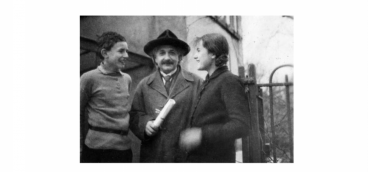Entering Unitarity

“Death may be the greatest of all human blessings.” — Socrates
Previously in this series: On Consciousness Part V: Is It All Predictable?
“I’m not afraid of death, I just don’t want to be there when it happens. –Woody Allen
The Uniform Determination of Death Act (UDDA) states, simply, that “An individual who has sustained either (1) irreversible cessation of circulatory and respiratory functions, or (2) irreversible cessation of all functions of the entire brain, including the brain stem, is dead.”
Short and sweet, but hardly relevant to our inquiry. The UDDA is designed to guide – and protect – police officers, physicians, EMTs and so on, that is, the folks who are looking down at our rapidly cooling bodies.
But what interests us is how we experience death – what does it feel like? Most people would probably say that death is the irreversible cessation of consciousness. People can be reversibly unconscious – during deep sleep or a coma, for example. But if consciousness ceases completely and can’t be retrieved, we are dead, regardless of what is happening with our bodies or brains.
But let’s recall that, according to the argument in this blog, human consciousness is simply the sum of our interactions with the cosmos, and in that we are no different from frogs or neutrinos. Thus, death isn’t the cessation of consciousness so much as it is the (instant) transition from one consciousness to another.
We don’t know what it’s like to be a proton, and when we’re a proton we won’t know what it’s like to be a human being, but whichever we are we are still conscious. In that important sense, death doesn’t exist at all and Woody Allen can rest easy.
But our immortality is even more profound than that. Let’s consider the phenomenon of unitarity, another weird idea that is nonetheless a bedrock principle of quantum mechanics.
Unitarity states that, analogous to the law of conservation of energy, information can neither be lost nor destroyed, but is always preserved. At least theoretically, we could work our way backward in time and recreate the entire life history of (for example) an electron. Every event in the life of that particle – its colors, spins, orbit leaps, collisions with other particles – could be reconstructed.
Unitarity has led an exciting life in quantum physics since the mid-1970s, when Stephen Hawking discovered “Hawking radiation” leaking from black holes. He announced that the radiation was random and contained no information. This suggested that everything, including information, that entered a black hole was lost forever, and that unitarity had therefore been violated. (This is known in physics as the “black hole information paradox.”)
But recently physicists discovered Hawking was wrong. The first step in challenging Hawking was taken, ironically, by Don Page. Page had become close to Hawking at the California Institute of Technology in the 1970s, and he followed Hawking back to Cambridge, where Page became Hawking’s live-in graduate student assistant. At CalTech it was Page’s calculations that first led Hawking to realize that black holes emit radiation.
Two decades after serving as Hawking’s assistant, Page found himself disagreeing with his mentor. According to Hawking, if a donkey fell into a black hole, the mass of the black hole would grow exactly as much as the mass of the donkey. But then, over billions of years, as the black hole emitted Hawking radiation, the black hole would eventually expire, like a balloon slowly leaking air. And since the radiation contained no information, it was impossible to say whether the radiation came from the donkey or from a star the black hole had eaten – information was permanently lost and unitarity was violated.
Page pointed out that Hawking had overlooked something, namely, quantum entanglement (see Part 2 of this series). Through entanglement, Page argued, Hawking radiation contained a link back to the origin of the radiation – the donkey or the star. True enough, Page declared, if you simply look at the radiation or the black hole you get no information. But if you look at them both simultaneously, you find the supposedly lost information.
I know that sounds complicated, but imagine you have encrypted your data so that understanding it requires a password. There is no useful information in the encrypted data and there is no information in the password. But when you combine them you gain access to the data and it becomes meaningful.
Page envisioned the life history of a black hole in terms of entropy (see Part 3 of this series). Initially, the black hole emits no radiation and therefore its “entanglement entropy” is zero (no information). And after all the radiation has leaked out of the black hole, its entanglement entropy is again zero since the black hole no longer exists.
But what happens in-between those two extremes? What happens, Page theorized, is that entanglement entropy grows as radiation begins to trickle out. But at some point – roughly halfway through the life of the black hole – entropy needs to decline if it is to return to zero at the death of the black hole. I.e., during the latter half of the black hole’s life it is emitting information that would allow us to recreate the entire life of the black hole and everything that fell into it – including our hapless donkey.
This was pretty impressive theorizing by Page, but actually calculating the entanglement entropy of a black hole was a huge challenge, and that challenge wasn’t surmounted until very recently – three decades after Page pointed the way.
Next week we’ll take a look at where unitarity stands today and what its implications might be for what we call “death.”
Next up: On Consciousness, Part VIII










